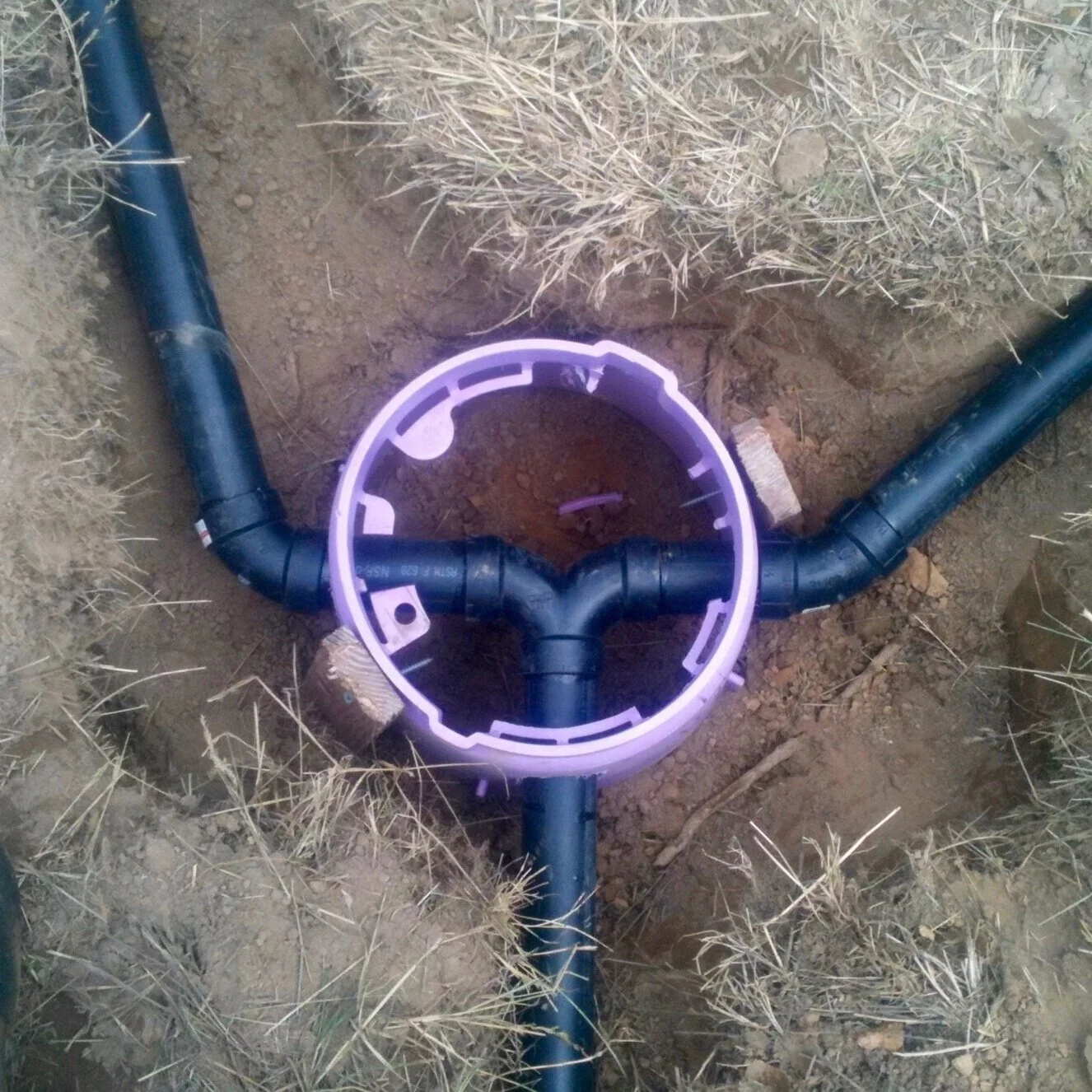
Low-tech vs . high-tech
Graywater Systems

Consider the options.
Different types of systems have unique advantages and which one(s) will work best for you depends on your site, budget, and goals.

Low-tech systems
Simple and robust
Low maintenance
Relatively inexpensive
Use passive gravity feed
No supplemental electricity
Some types of systems don’t require permit
Use flood irrigation
Best for trees and shrubs

High-tech systems
Can pump water uphill
Works for lawns and small plants
Use drip irrigation
High irrigation-efficiency
Able to control other freshwater or rainwater irrigation
Function as a complete irrigation system for a property
Permit relatively easy and straightforward

Overall net benefit
is determined by summing all the “benefits” and subtracting all the “costs” of a project, referring to the overall impact a system has on your quality of life, water and resource use and ecological footprint. High-tech designs that use drip irrigation may offset more potable water use but may have operational costs (ie. electricity for pump), and a higher initial cost and environmental impact from high-tech components. Are the water savings sufficient to justify the proposed system?

Do what's appropriate for your context.
Different designs work for different situations and often more than one type of system is warranted on each site. Ask the questions below to gain deeper understanding into what type of system is appropriate for you.

What do you want to irrigate?
Trees, shrubs or large plants
work well with low-tech systems because they use flood irrigation to “mulch basins” (that contain the surge of graywater). Plants with relatively large root systems benefit from that type of concentrated distribution. Graywater requires no filtration to be used with this method which makes low-tech systems very simple and low maintenance.
Small plants, lawn, or complicated landscape
needs a very broad and even distribution that can only be accomplished with graywater using drip irrigation. In order to pass through tiny drip emitters graywater needs to be filtered and pressurized which makes high-tech systems more complicated as filters need to be automatically self-cleaning to prevent rapid clogging.

Will gravity flow work on your site?
Graywater flows downhill.
If the area you want to irrigate is level or downhill from the elevation of your plumbing, then you can likely use a passive gravity feed to your advantage. Wastewater piping systems are designed to slope downwards continuously to prevent particles in the water from accumulating and clogging the system.
Greywater pumps uphill.
When the only areas you can irrigate are up hill you have no choice but to use a pump. Pressurizing the graywater with a pump adds to the cost and complexity of a system, but also affords you the opportunity to pump through a filter, use drip irrigation, and measure and control flows to a greater degree.

What is your budget?
Simple works
Low-tech systems are reliable, save water, and have lower initial costs (≈$500 - $4,000) and low to no operating costs. The fact that they don’t rely on high-tech components and electricity to operate means they have a low environmental impact and their overall net benefit is high.
Complex works…sometimes
Because high-tech systems are able to use drip irrigation and control the water to a high degree they have the potential to offset significant quantities of potable water use (irrigation water out of the tap), which over time could offer a high return on investment for the more substantial initial costs (≈$1,500 -$8,500) of a high-tech system.

What is your motivation for using graywater?

Save water.
Lower your potable water use for irrigation by replacing it with graywater.
Do the right thing.
Green design is good design, greywater is free resource that can and should be reused.
Stay prepared.
Have a reliable water source for irrigation during a drought or emergency. .
Be efficient.
Reduce unnecessary flows to wastewater treatment plants and septic systems, and return vital nutrients to the soil.

Whatever the reason…
There’s a graywater system right for you.
Combination systems.
Pumped/filtered with overflow to branched drain

This water wise garden accentuated with artistically themed plantings uses a combination graywater/rainwater irrigation system.
— Photo: An ALT Water Design/Build














